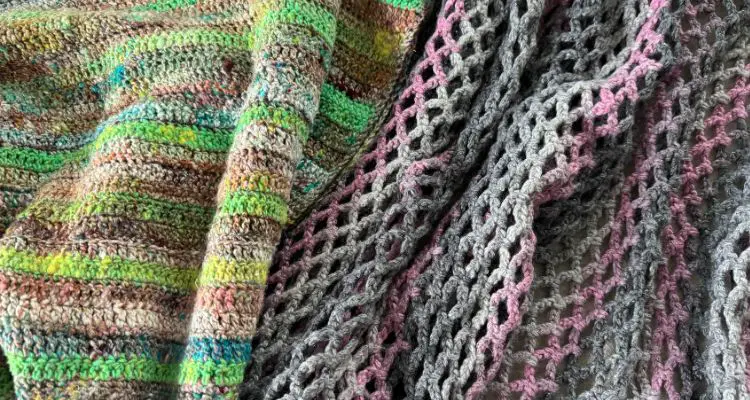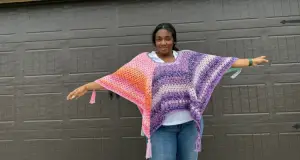I’m here to challenge the assumption that ALL crochet is stiff, so we’re going to talk about drape!
This is not about when a stiff crochet fabric is needed for tapestry crochet or creating pieces and shapes that need to hold their shape, like amigurumi and hats with brims.
In crochet, the term “drape” refers to how a finished crocheted fabric hangs or flows. It describes the way the fabric drapes over the body or an object. The drape of a crochet project is influenced by the type of yarn used, hook size / gauge, stitch pattern / stitch density, and blocking.
A crochet fabric with good drape will be flexible, soft, and have a flowing quality. The crochet fabric will stretch and move with the person rather than feel cumbersome or restrict movement.
Choosing the Best Yarn
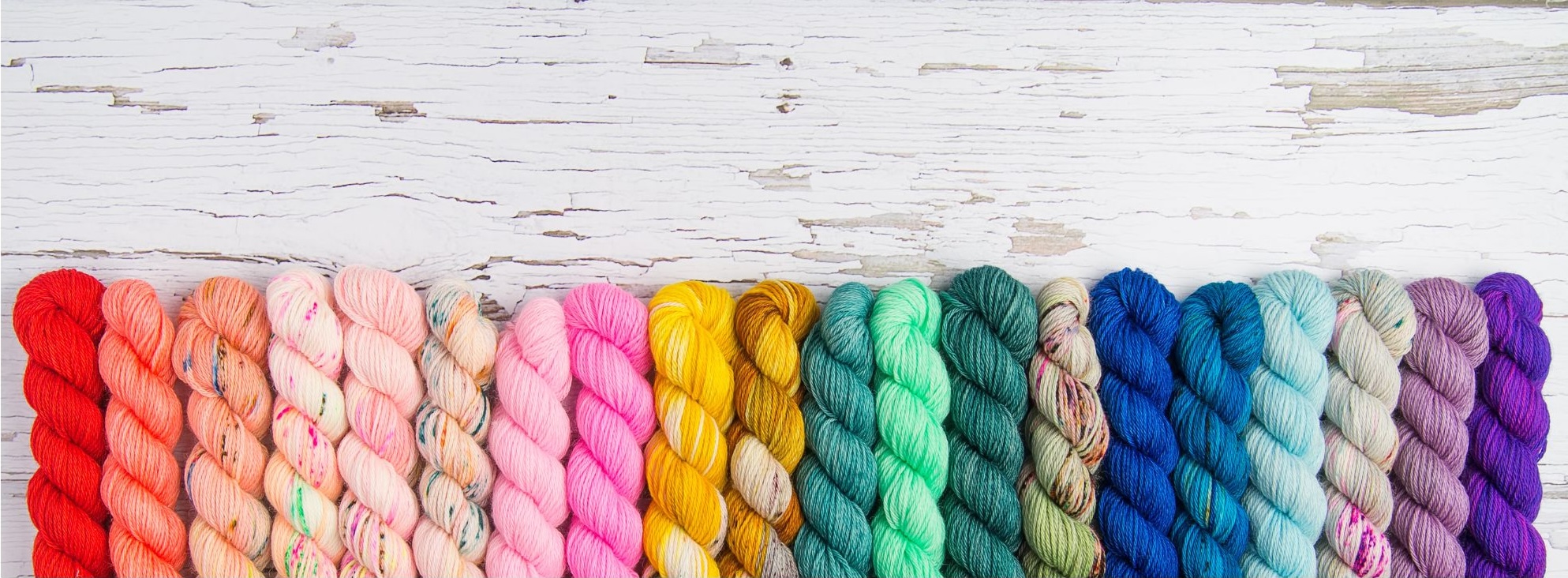
Rather than repeating everything I’ve stated before about choosing yarn, read this blog post about the Best Yarn for Crochet Garments.
To summarize, you want to choose a fiber content and weight that is appropriate for the type of crochet garment that you’re making. For example, cotton yarn is perfect for summer garments because it can be lightweight and absorbent on hot days, but lacks interlocking fibers that will trap your body heat during the winter. To stay warm, a crochet sweater made from wool works better.
Yarn weight (thickness) also impacts drape. Thicker yarns typically create a thicker fabric with less drape, but the total area covered and hook size will impact the drape more than the thickness of the yarn. Choose a thinner yarn for lightweight garments that will flow and move the easiest with the body. Use a supersized crochet hook to create good drape with bulky yarns.
Crochet Hook Size and Gauge
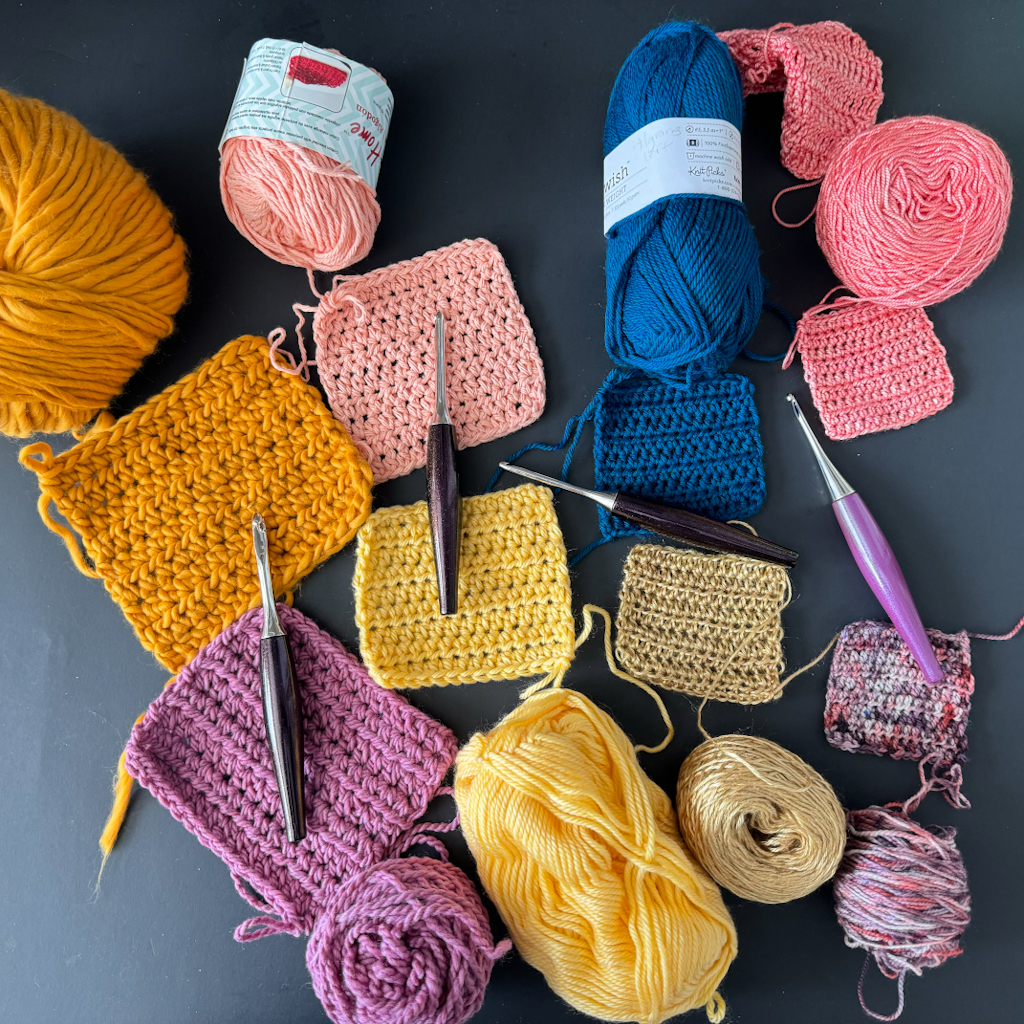
Without going on a tangent about gauge, read this blog post for tips on how to work your gauge to match a pattern.
Your gauge is typically impacted by the crochet hook size and then whether you tighten or pull up the Golden loop of each stitch. No matter which one you do, you want to practice having consistent gauge throughout a crochet project. If your gauge changes, it will misshape the fabric and impact how much yarn you use.
It helps to start with the recommended crochet hook listed in a pattern to make a gauge swatch before beginning a crochet garment. This saves you time and frustration.
- If your gauge is smaller than listed, make a new gauge swatch with a larger crochet hook.
- If your gauge is larger than lister, make a new gauge swatch with a smaller hook.
- Once you find the right hook size, examine how the swatch moves by scrunching it or hanging on something to ensure you like how the fabric moves.
Tip: a swatch is much smaller than an entire project, so the drape will be better over the area of entire project compared to a 6″ x 6″ square.
Crochet Stitch and Density
Wait, what is stitch density??
Stitch density refers to the distance between individual stitches in your fabric. This is also tied to gauge, since you measure the space between the individuals stitches to check gauge. Stitches that are close together are more dense than stitches that have more space between them. For example, the slip stitch is going to create the densest fabric because there is little space between the individuals stitches. The taller the crochet stitch, the less density as there is more space between the individual stitches. Moogly has a great post about super tall stitches, such as the nonuple treble…
When referring to a crochet stitch, it can be an individual stitch or combination of stitches, such as the shell stitch (5 dc in one stitch) or linen stitch (single crochet, chain one, skip next st).
Crochet stitches with a high density will create a stiff fabric. Anyone want to make a long sleeve top in all single crochet??
I’m just kidding. You can absolutely make a long sleeve top in single crochet that has good drape. By choosing a thinner yarn and using a larger than recommended hook, the fabric will drape well against the body.
Let’s look at a combination of stitches, as the hook size and yarn can change the amount of drape.
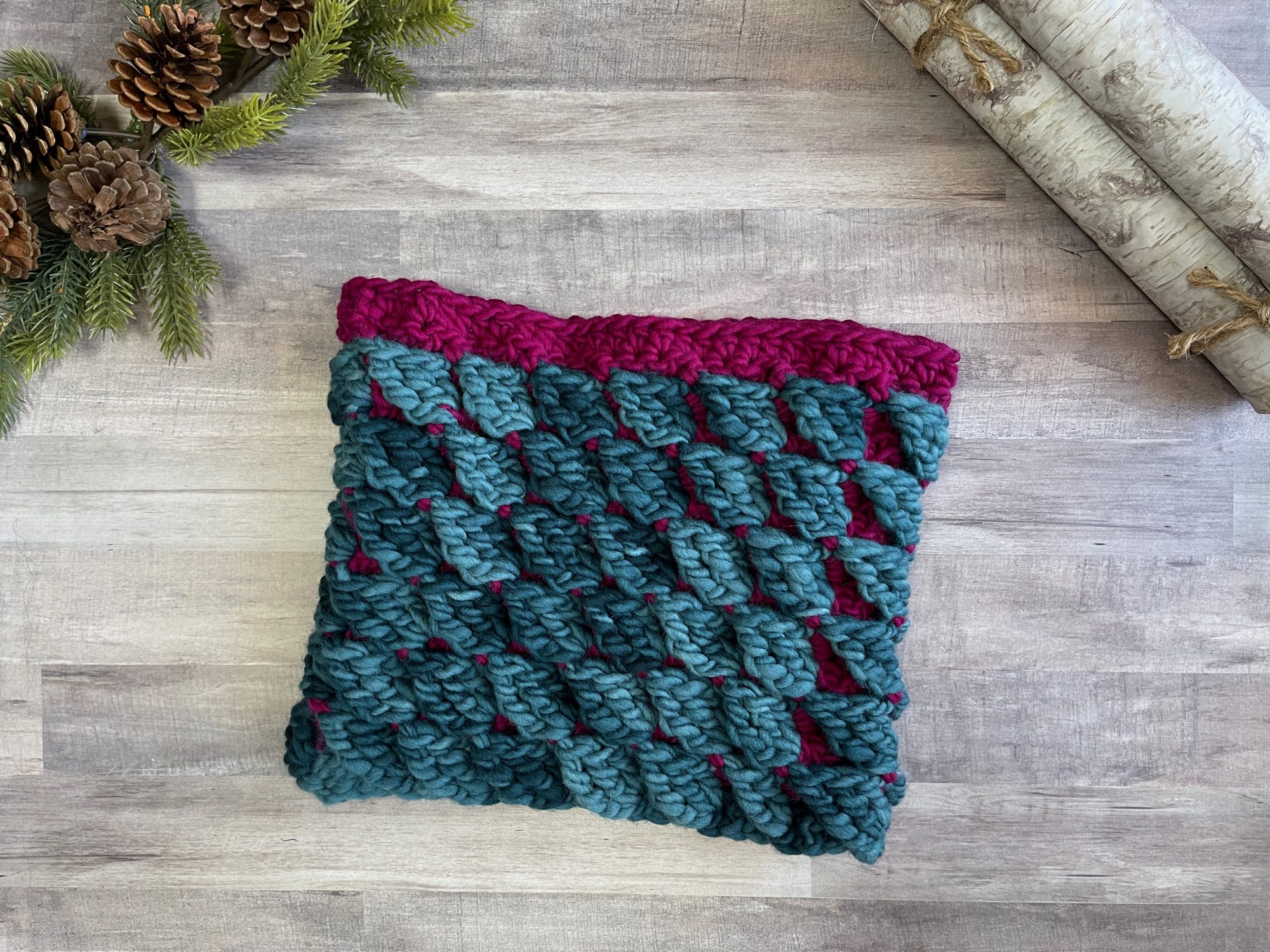
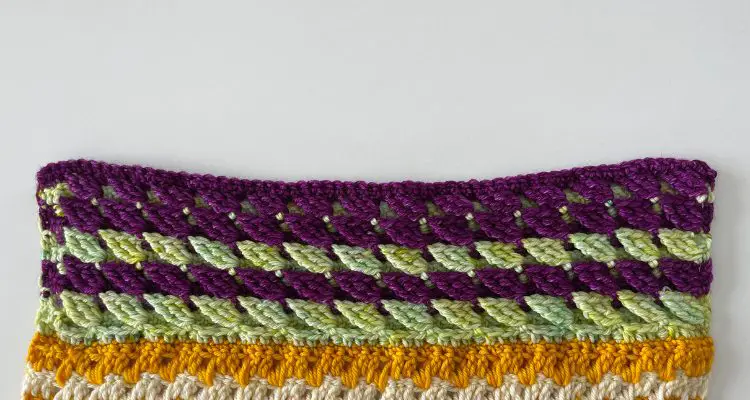
The Embossed Wedge Stitch creates a double sided fabric by working a group of stitches around a half double crochet. By using a super bulky wool blend yarn to make the Berry Cozy Cowl, the fabric has some movement from the space between the stitch groups, but it’s also kind of stiff from the thickness of the yarn. In contrast, the Berry and Hedges Scarf uses the same stitch in a worsted weight superwash wool and has better drape as the yarn is thinner, and less dense.
Overall, the stitches you choose will impact the amount of drape. No matter how dense a stitch is, drape can usually be improved by using a larger crochet hook. By using a larger crochet hook, you are creating more space within and between the stitches so that the fabric can move.
Blocking
Blocking refers to using a moisture (water or steam) to shape a fabric.
In order to shape a crochet fabric, the stitches have to relax, and the fiber content impacts how much it will relax.
Animal fibers are typically going to relax the most when wet blocked (soaked in warm water with a gentle detergent). Plant fibers respond well to blocking too, as they may soften over time, while maintaining stitch definition. Synthetic fibers tend to respond the least to blocking because the strands lack the same structure like animal or plant fibers. Natural and synthetic fiber blends get the best benefits of each fiber to create a sturdy yarn that will block and stretch to hold up over multiple wears and washing.
Regardless of the fiber type, blocking is recommended to shape the fabric in a crochet garment, and may be necessary to reach the finished measurements for fitting your body, or opening up a lace pattern. This improves the amount of drape.
When choosing the method of blocking, consider the desired outcome:
- Spray Blocking: pin the fabric to a surface in the final shape and measurements, and then use a spray bottle filled with just tepid water or water and a gentle detergent to wet the fabric. You’ll allow the fabric to dry completely before removing the pins.
- Steam Blocking: Pin the fabric to the final shape and measurements. Holding a handheld steamer a few inches above the fabric, move from side to side over the entire fabric until it is damp to the touch.
- Wet Blocking: fill a basin or sink with warm water and a gentle detergent; add the crochet garment to the water and gently press until all of of it submerged. Let it soak for 15 minutes, and then drain the water. Carefully press the water from the crochet fabric without wringing or twisting to prevent felting non-super wash wools or misshaping your crochet; pin the fabric to a surface in the final shape and measurements and allow to dry completely.
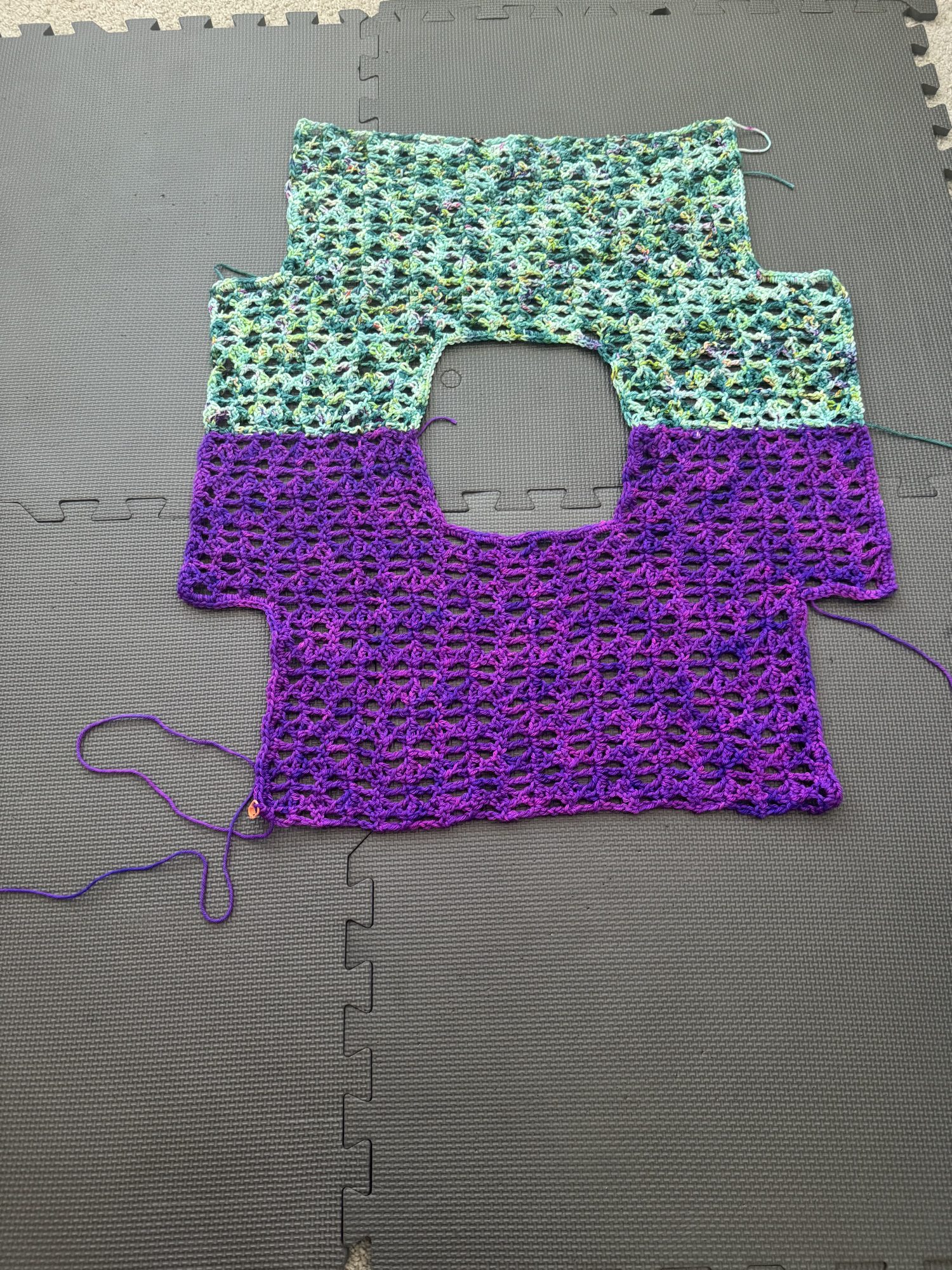
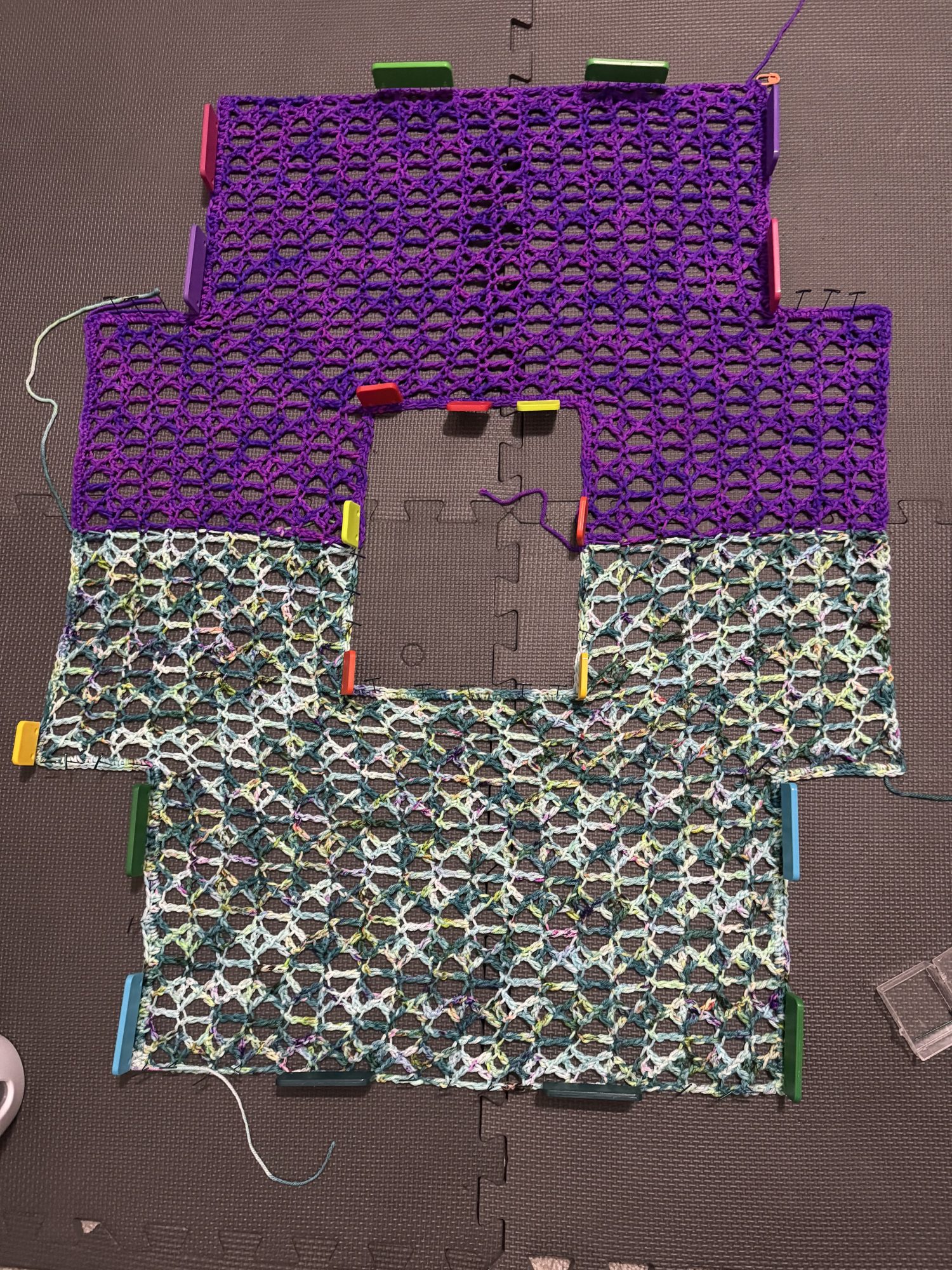
Remember that achieving the perfect drape can sometimes require a bit of trial and error. Don’t be afraid to experiment with different yarns, hook sizes, and stitch patterns until you achieve the desired drape for your crochet project.
Pin it

Want to talk about yarn goodness, crochet tips, and exclusive weekly deals? Join my Facebook Group, Creations By Courtney Community.
If we’re not hanging out on social media yet, come check me out on Facebook, Instagram and Pinterest.
Join my newsletter for sneak peeks, crochet tips, and more.
Use #CreationsByCourtney on social media when sharing your projects.
This pattern is not to be duplicated or resold, and not to be reproduced commercially. You may sell finished products on Etsy, at farmers markets, and craft fairs, but please credit Creations By Courtney as the pattern’s author.

